Geothermal systems use a series of underground pipes, called loops, to move heat between a building and the earth. These loops can be buried horizontally across a large area or drilled vertically into the ground, depending on the space and soil type.
In closed-loop systems, a liquid antifreeze/water solution circulates through the pipes. During winter, the system pulls heat from the ground and transfers it indoors. In the summer, it works in reverse, carrying heat away from the building and into the ground.
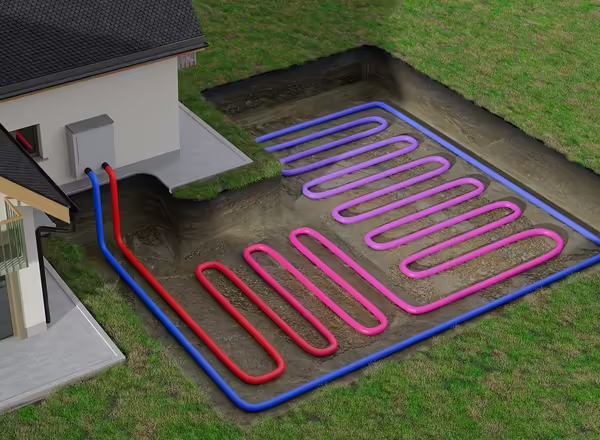
A closed-loop system is the most commonly used system and comes in three types:
- Horizontal system: Installed over a wide area of ground and requires plenty of space. Trenches can run hundreds of feet long and 6 to 10 feet deep.
- Vertical ground loop: Installed via one or more boreholes approximately 200 to 500 feet into the ground. These are used when space is limited, where minimum disruption to the landscaping is requested, or when there are other limitations, such as rock formations close to the earth’s surface.
- Pond/lake loops: Requires a water source so the pump can be submerged.
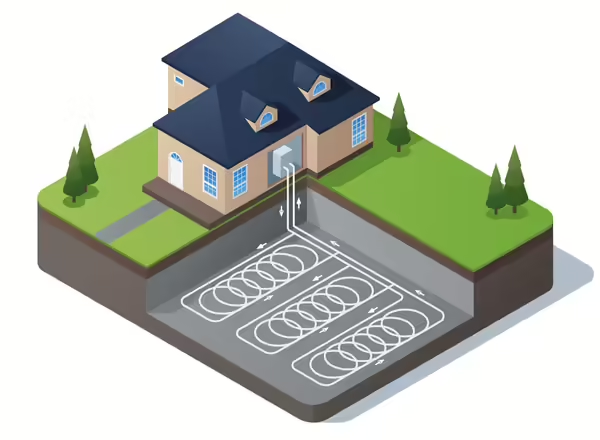
Horizontal closed loop systems have been utilized for many years. They are easy to install in open trenches, excavations and directional boring. This helps keep the installation cost down. Cons: They require sufficient surface area to bury the loop. Horizontal systems tend to be less efficient than vertical systems. The seasonal changes in soil temperature and moisture content impact the thermal energy transfer efficiency between the soil and fluid in the loop.
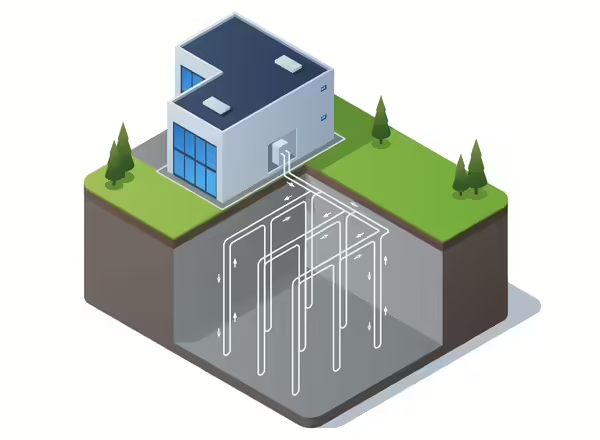
Vertical closed loop systems consist of one or a series of boreholes with pipe loops down each hole. These are becoming more common due to better thermal performance. Installation costs have been reduced by new technologies for boring holes and other aspects. New research data has helped reduce costs through better estimates of heat transfer characteristics based on ground geology and location.
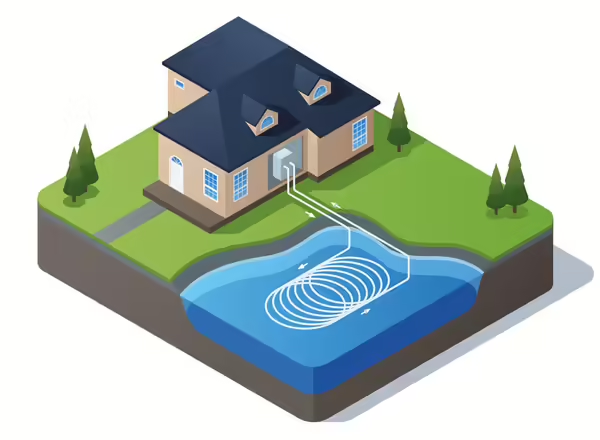
The most common type of geothermal energy in use in the US are horizontal ground and vertical borehole closed loop heat exchangers. As the name implies, the systems utilized a thermal transfer fluid circulating through a closed loop to move the energy in the form of heat. Heat is absorbed or dissipated through the portion of the loop underground. The energy (heat or cooling) is then connected to an application such as a central air unit, hot water heating system, or radiant floor unit.
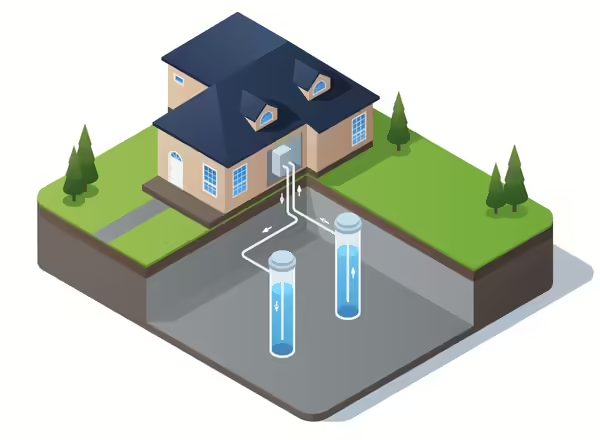
Open-loop systems are less common and more dependent on local environmental conditions and regulations.
This system is different from the closed-loop system pond/lake loops. The open-loop system draws water directly into the system, while the closed-loop pond/lake system has water submerged around the pipes but never directly inside the system.
Open-loop geothermal systems pump water directly out of a pond or well. The water that is drawn circulates directly through the heat pump system to use it for the heat exchange process. The water is then returned to the earth by running it on the ground and letting it seep into the aquifer, or it can be returned to a well, pond, or drainage ditch, depending on local codes and regulations. If there is an abundant source of relatively clean water, an open-loop system can be a cost-effective way to harness geothermal energy.
Regardless of the type, the ground loop is the core of geothermal systems.